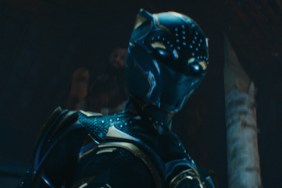
Over two decades ago, Barry Sonnenfeld’s classic Men in Black was a significant hit with audiences and critics alike. It was loosely based on a comic book that’s barely been read since it was released in 1990. But Sonnenfeld’s 1997 film was never intended to be a franchise. Instead, it was designed to be a one-off. Despite this, Men in Black‘s success eventually spawned two sequels, theme park attractions, and an animated series. While the cartoon opened up additional story possibilities, the sequels kept telling variations of the original story. Unfortunately, Men In Black: International suffers from the same weakness and it’s once again a recycled take on the first film.
What makes this sequel so frustrating is that it never quite understands what made the franchise successful in the first place. Say what you will about the sequels, but the trilogy was fairly consistent throughout. Whereas the Sonnenfeld films are sci-fi stories with comedic elements, the latest entry is a straightforward action comedy. The first MiB played the story straight, and it had stakes to go with the laughs. However, Men in Black: International betrays those stakes for the sake of bad comedy. It’s not only a poor attempt at franchise rejuvenation, it makes a strong case to stop making MiB movies altogether.
Directing On Autopilot

Director F. Gary Gray has proven to be a hit-and-miss filmmaker. Although Straight Outta Compton and Friday are notable exceptions, most of his films lack a distinct vision. Unfortunately, Men in Black: International is yet another movie made on autopilot. Gray’s direction is lackluster and he has nothing to add to the mythology of the franchise. Furthermore, the pacing is terrible, and the film outstays it’s welcome by about twenty minutes. The action is unimaginative and the blocking is lazy; which creates emotionally and physically static characters. Gray’s overall aesthetic is weird, but not in the way that made the first three films so appealing.
Despite an impressive cast, the chemistry between the various actors is virtually nonexistent. Tessa Thompson’s inclusion as the lead of the film is inspired, but the material gives her nothing to work with. As a result, she gives a performance that – while nuanced – is also one-dimensional. Conversely, Chris Hemsworth was woefully miscast, and he’s trying way too hard to be funny. Hemsworth plays Agent H fast and loose, offering an energetic performance that feels like it’s from a completely different movie. Kumail Nanjiani is a highlight, but even his comedic prowess isn’t enough to salvage this film. Liam Neeson and Emma Thompson end up being the most in sync with the quirky style that Sonnenfeld established. Unfortunately, none of these players make an impact.
Cookie Cutting

Art Marcum and Matt Holloway’s screenplay is pedestrian at best. The writing in Men in Black: International features a wonky structure with minimal character development. It banks on previous knowledge of the lore without building upon the MiB mythos. This is very problematic for a film that is trying to re-contextualize the franchise for a new generation. It also frequently breaks the “show, don’t tell” adage; which makes the meandering plot feel lifeless.
The Hive were a poor choice for the film’s evil adversaries, primarily because they’re not really threatening. They are simply an excuse to include unnecessary action sequences. The script relies on strange coincidences and a poorly-telegraphed twist. But by far the biggest issue is that the film lacks heart. Without an emotional core to latch onto, Men in Black: International becomes forgettable window dressing. It’s about as cookie cutter as a summer blockbuster can get.
A Pale Imitation

Although the franchise has a strong heritage of mixing practical and digital effects, the technical aspects of this sequel are entirely different from its predecessors. The cinematography in the film is unmotivated and the editing is unnatural. And there’s absolutely no sense of geography within the action sequences. Most of the digital creature work in Men in Black: International is indistinguishable and just plain ordinary. There are no practical creature effects; which makes Rick Baker’s fantastic work on the original trilogy that much more impressive. With the exception of Pawny, all of the CGI creatures are a letdown. This film doesn’t have any real sense of craftsmanship on display. Instead, it feels like a pale imitation of its predecessors.
Perhaps the biggest problem facing Men in Black: International is that it isn’t funny. Comedy is always subjective, but the lack of basic setups and payoffs makes this movie an absolute bust. Inept storytelling and generic filmmaking define this sequel. It only exists as a series of vignettes for Hemsworth and Thompson to fire space guns while trying to look cool. Will Smith and Tommy Lee Jones “made this look good” in 1997. In 2019, there’s no reason for such a mediocre MiB sequel to exist.




